Related Research Articles
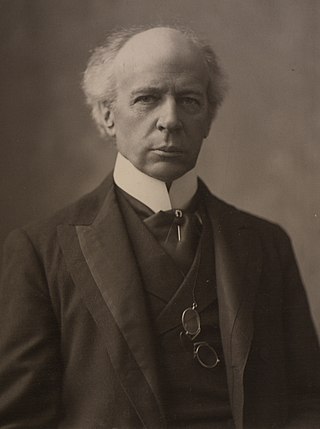
Sir Henri Charles Wilfrid Laurier, was a Canadian lawyer, statesman, and politician who served as the seventh prime minister of Canada from 1896 to 1911. The first French Canadian prime minister, his 15-year tenure remains the longest unbroken term of office among Canadian prime ministers and his nearly 45 years of service in the House of Commons is a record for the House. Laurier is best known for his compromises between English and French Canada.
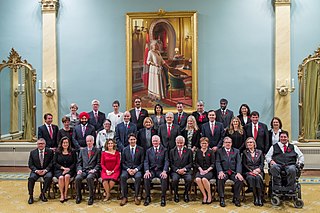
The Cabinet of Canada is a body of ministers of the Crown that, along with the Canadian monarch, and within the tenets of the Westminster system, forms the government of Canada. Chaired by the prime minister, the Cabinet is a committee of the King's Privy Council for Canada and the senior echelon of the Ministry, the membership of the Cabinet and Ministry often being co-terminal; as of November 2015 there were no members of the latter who were not also members of the former.
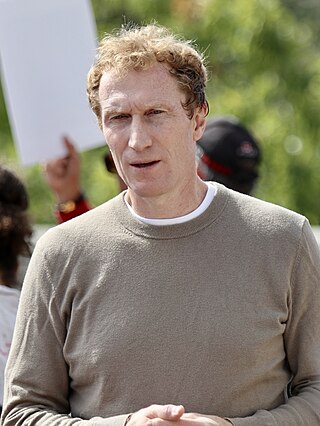
The minister of immigration, refugees and citizenship is a minister of the Crown in the Canadian Cabinet. The minister is responsible for Immigration, Refugees and Citizenship Canada, which is the federal department responsible for immigration, refugee and citizenship issues in Canada.
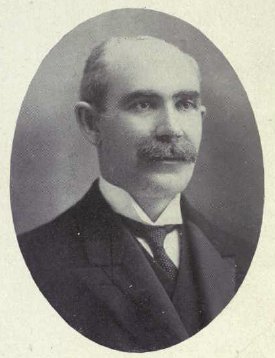
Robert Rogers, was a Canadian merchant and politician. He served as a cabinet minister at the federal and provincial levels.
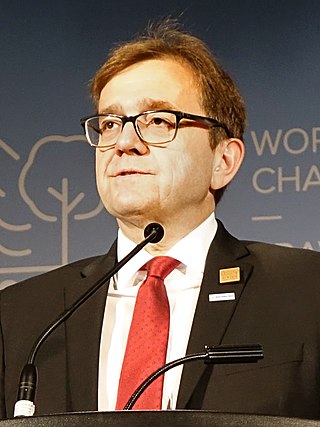
The minister of energy and natural resources is the minister of the Crown in the Canadian Cabinet who is responsible for Natural Resources Canada (NRCan).

The minister of national revenue is the minister of the Crown in the Canadian Cabinet who is responsible for the Canada Revenue Agency (CRA), as well as the administration of taxation law and collection.
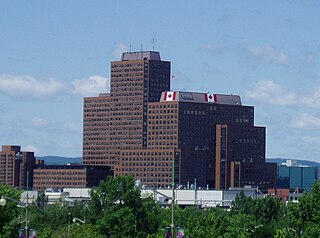
Crown–Indigenous Relations and Northern Affairs Canada is the department of the Government of Canada responsible for Canada's northern lands and territories, and one of two departments with responsibility for policies relating to Indigenous peoples in Canada.

The Northern Development, Mines, Natural Resources and Forestry is a government ministry of the Canadian province of Ontario that is responsible for Ontario's provincial parks, forests, fisheries, wildlife, mineral aggregates and the Crown lands and waters that make up 87 per cent of the province. Its offices are divided into Northwestern, Northeastern and Southern Ontario regions with the main headquarters in Peterborough, Ontario. The current minister is Greg Rickford.
The Minister of the Interior was the member of the Canadian Cabinet who oversaw the Department of the Interior, which was responsible for federal land management, immigration, Indian affairs, and natural-resources extraction.
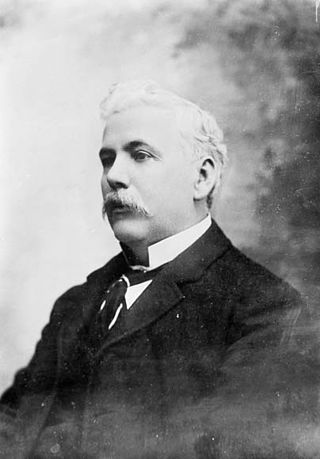
William Templeman, was a Canadian newspaper editor and politician.

The Second Canadian Ministry was the cabinet chaired by Prime Minister Alexander Mackenzie. It governed Canada from 7 November 1873 to 8 October 1878, including the last two months of the 2nd Canadian Parliament as well as all of the 3rd. The government was formed by the Liberal Party of Canada.

The Fourteenth Canadian Ministry was the second cabinet chaired by Prime Minister William Lyon Mackenzie King. It governed Canada from 25 September 1926 to 7 August 1930, including only the 16th Canadian Parliament. The government was formed by the Liberal Party of Canada. Mackenzie King was also Prime Minister in the Twelfth and Sixteenth Canadian Ministries.

The Eleventh Canadian Ministry was the first cabinet chaired by Prime Minister Arthur Meighen. It governed Canada from 10 July 1920 to 29 December 1921, including only the last year of the 13th Canadian Parliament. The government was formed by the National Liberal and Conservative Party. Meighen was also Prime Minister in the Thirteenth Canadian Ministry.

The Tenth Canadian Ministry was the second cabinet chaired by Prime Minister Sir Robert Borden. It governed Canada from 12 October 1917 to 10 July 1920, including most of the 13th Canadian Parliament. The government was formed by the Unionists, a war-time coalition between the old Conservative Party of Canada and some members of the Liberal Party of Canada. Borden was also Prime Minister in the Ninth Canadian Ministry, but formed a coalition ministry for the 1917 Canadian federal election.

The Ninth Canadian Ministry was the first cabinet chaired by Prime Minister Sir Robert Borden. It governed Canada from 10 October 1911 to 12 October 1917, including only the 12th Canadian Parliament. The government was formed by the old Conservative Party of Canada. The Conservatives governed in coalition with the Liberal-Conservative Party until 12 October 1916 when the last Liberal-Conservative cabinet minister, Sam Hughes, was dismissed. Borden was also Prime Minister in the Tenth Canadian Ministry, which he formed for the coalition government with the Liberal–Unionists in the lead up to the 1917 Canadian federal election.
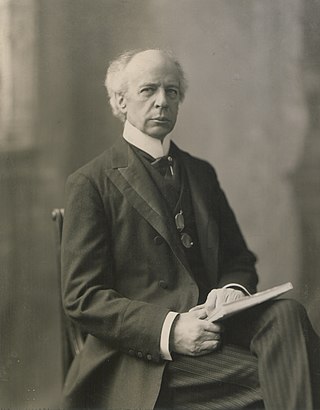
The Eighth Canadian Ministry was the cabinet chaired by Prime Minister Sir Wilfrid Laurier. It governed Canada from 11 July 1896 to 5 October 1911, including all of the 8th, 9th, 10th, and 11th Canadian Parliaments. The government was formed by the Liberal Party of Canada.
The position of Minister of Mines and Resources was a cabinet portfolio in Canada from 1936 to 1950. The mines portfolio had previously been that of the Minister of Mines, which was a portfolio adjunct to other ministries such as Inland Revenue and Indian Affairs.
The Minister of Customs was a position in the Cabinet of the Government of Canada responsible for the administration of customs revenue collection in Canada. This position was originally created by Statute 31 Vict., c. 43, and assented to on 22 May 1868.
Unorganized North East Parry Sound District is an unorganized area in Parry Sound District in Central Ontario, Canada. It is served by the local services board of Laurier and is part of the Almaguin Highlands region. The region had a population of 179 in the Canada 2021 Census, and a land area of 183.04 square kilometres.
The Minister of Mines and Technical Surveys was a position in the Canadian Cabinet from 1950 to 1966.
References
- 1 2 3 "Mines (1907-04-27 - 1936-11-30)". lop.parl.ca. Retrieved 2021-04-27.
- ↑ "Our history". Natural Resources Canada. 2013-10-28. Retrieved 2021-04-27.